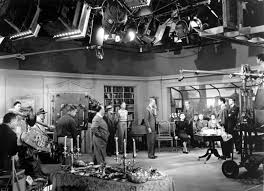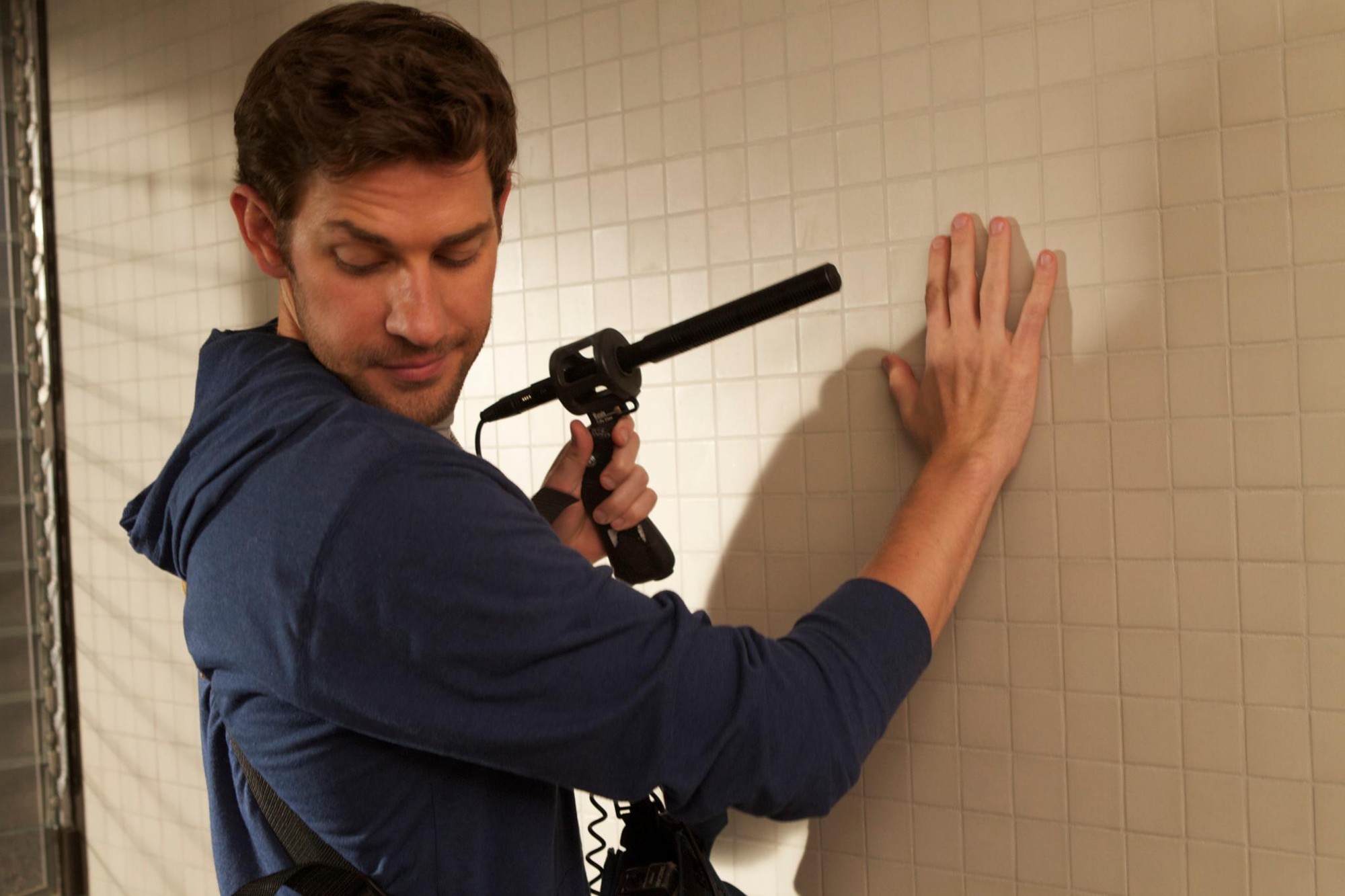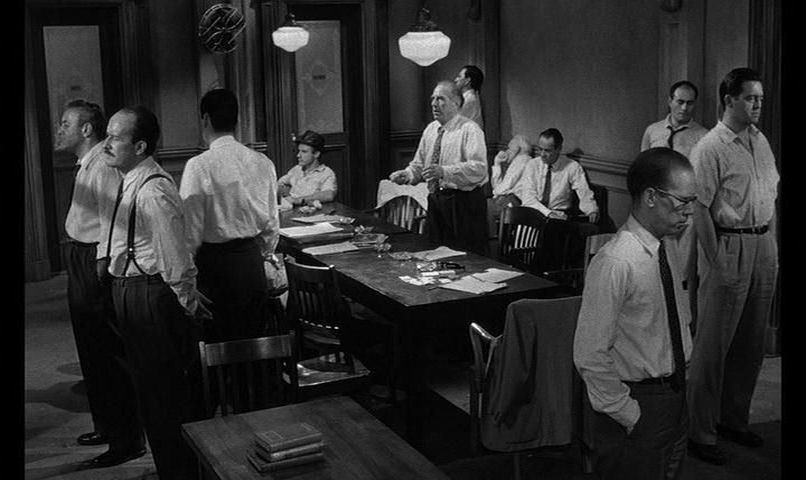 Hitchcock's nostalgia from the day before was still on. I was curious to re-watch another of his movies, one that is a hit on cinema's studies (My first proofreading job was a dissertation about this film). Rope is well known for its long shots, a difficult choice of filming in that time. I've seen it last some 10 years ago, but I've already had lost bits of this story about the cruelty and danger of ideas of superiority - the most harmful plague in humanity's history.
Hitchcock's nostalgia from the day before was still on. I was curious to re-watch another of his movies, one that is a hit on cinema's studies (My first proofreading job was a dissertation about this film). Rope is well known for its long shots, a difficult choice of filming in that time. I've seen it last some 10 years ago, but I've already had lost bits of this story about the cruelty and danger of ideas of superiority - the most harmful plague in humanity's history.
Truffaut's interviews with Hitchcock became a book, Hitchcock/Truffaut, and it is a movie's class for sure. About Rope, Hitchcock's first colored movie, there are many interesting aspects. Essentially, Hitchcock was a bit frustrated by his own attempt to create the same idea of continuity from the play on which the film is based. to achieve that, he chose a the single plane, with cuts being disguised by the focus on a plain surface - Brandon's suit, the infamous wood chest, etc. Being aware of all the challenges in filming, the movie becomes even more stunning. Camera and actors movements had to be carefully planned, and I tried to observe every tiny detail. I got some of them, but this film is not just technique, and so I got lost in what was happening in front of me.
The dialogues are outstanding, and the conclusion is not a small feature in this. The most outrageous and hideous crimes in humanity are summarize here, in the delusional and arrogant feeling of a teacher and his younger students. Other subtleties are also discussed here, as the implicit homosexuality of two characters - because of that the movie was banned from many cities on the US.
James Stewart didn't like this movie, but I love him in it. His gradual realization of what was in fact happening under a dinner party on a luxury flat in NY is created without excess by his solid performance. His character lives in the world of ideas, but is confronted with his own beliefs in a horrendous act. John Dall reminds Ben Affleck, both sharing a striking resemblance to a rat (It is truly annoying), so it wasn't difficult to me to despise him from the beginning. The snobbish features of some characters are so well represented by this actor, and also by the dialogue, that the conclusion is a coherent way to finish this tale about the futile cruelty of men that thing they are better than their peers.
 |
Rope. Directed by Alfred Hitchcock. With: James Stewart, John Dall, Farley
Granger (the credits are a curiosity by itself). Writers: Hume Cronyn, Albert Laurentis
from the play by Patrick Hamilton. USA, 1948, 80 min., Mono, Color (Cable). |
Ps: There's a whimsical dialogue about a movie with Cary Grant and Ingrid Bergman with a one word title - it is probably Notorious, but the old lady is not able to remember it - actually, she couldn't remember the name of anything (she's worse than me).
PPS: If you are patient, the part about Rope in Hitchcock/Truffaut's interview is very interesting:
FRANÇOIS TRUFFAUT. Rope was
made in 1948. In several respects this picture is
a milestone in your career. For one thing, you
produced it; for another, it was your first color
film; and finally,· it represented an enormous
technical challenge. Is the screenplay very different
from Patrick Hamilton's stage play?
ALFRED HITCHCOCK. No, not really.
Arthur Laurents did the screenplay and Hume Cronyn worked with me on the adaptation. The
dialogue was partly from the original play and
partly by Laurents.
I undertook Rope as a stunt; that's the only way
I can describe it. I really don't know how I came
to indulge in it.
The stage drama was played out in the actual
time of the story; the action is continuous from
the moment the curtain goes up until it comes
down again. I asked myself whether it was technically
possible to film it in the same way. The
only way to achieve that, I found, would be to
handle the shooting in the same continuous action,
with no break in the telling of a story that
begins at seven-thirty and ends at nine-fifteen.
And I got this crazy idea to do it in a single When I look back, I realize that it was quite
nonsensical because I was breaking with my
own theories on the importance of cutting and
montage for the visual narration of a story. On
the other hand, this film was, in a sense, precut.
The mobility of the camera and the movement
of the players closely followed my usual cutting
practice. In other words, I maintained the rule
of varying the size of the image in relation to its
emotional importance within a given episode.
Naturally, we went to a lot of trouble to achieve this; and the difficulties went beyond our problems
with the camera. Since the action starts in
broad daylight and ends by nightfall, we had to
deal with the gradual darkening of the background
by altering the flow of light between
seven-thirty and nine-fifteen. To maintain that
continuous action, with no dissolves and no
time lapses, there were other technical snags to
overcome, among them, how to reload the camera
at the end of each reel without interrupting
the scene. We handled that by having a figure
pass in front of the camera, blacking out the
action very briefly while we changed from one
camera to the other. In that way we'd end on a
close-up of someone's jacket, and at the beginning
of the next reel, we'd open with the same
close-up of the same character.
F.T. Aside from all of this, I imagine that
the fact that you were using color for the first time must have added to your difficulties.
A.H. Yes. Because I was determined to reduce
the color to a minimum. We had built the
set of an apartment, consisting of a living room,
a hallway, and a section of a kitchen. The picture
overlooked the New York skyline, and we
had that background made up in a semicircular
pattern, so that the camera might swing around
the room. To show that in proper perspective,
that background was three times the size of the
apartment decor itself. And between the set and
the skyscrapers, we had some cloud formations
made of spun glass. Each cloud was separate
and mobile; some were hung on invisible wires
and others were on stands, and they were also
set in a semicircular pattern. We had a special
working plan designed for the clouds, and between
re~ls they were shifted from left to right.
They were never actually shown in motion, but
you must remember that the camera wasn't always
on the window, so whenever we changed
the reels, the stagehands would shift each cloud
into the position designated on our working
plan. And as soon as a cloud reached the edge
of the horizon, it would be taken off and another
one would appear in view of the window
at the other side.
F.T. What about the problems with the
color?
A.H. Toward the last four or five reels, in
other words, by sunset, I realized that the or
ange in the sun was far too strong, and on ac
count of that we did the last five reels all over
again. We now have to digress a little to talk
about color.
The average cameraman is a very fine techni
cian. He can make a woman look beautiful; he can create natural lighting that is effective without
being exaggerated. But there is often a problem
that stems purely from the cameraman's
artistic taste. Does he have a sense of color and
does he use good taste in his choice of colors?
Now, the cameraman who handled the lighting
on Rope simply said to himself, "Well, it's just
another sunset." Obviously, he hadn't looked at
one for a long time, if ever at all, and what he
did was completely unacceptable; it was like a
lurid postcard.
Joseph Valentine, who photographed Rope, had
also worked on Shadow ofa Doubt. When I saw
the initial rushes, my first feeling was that things
show up much more in color than in black and
white. And I discovered that it was the general
practice to use the same lighting for color as for
black and white. Now, as I've already told you,
I especially admired the approach to lighting
used by the Americans in 1920 because it overcame
the two-dimensional nature of the image
by separating the actor from the background
through the use of backlights-they call them
liners-to detach him from his setting.
Now in color there is no need for this, unless
the actor should happen to be dressed in the same color as the background, but that's highly
improbable. It sounds elementary, doesn't it,
and yet that's the tradition, and it's quite hard
to break away from it. Surely, now that we work
in color, we shouldn't be made aware of the
source of the studio lighting. And yet, in many
pictures, you will find people walking through
the supposedly dingy corridors between the
stage and dressing rooms of a theater, and because
the scene is lighted by studio arc lamps,
their shadows on the wall are black as coal. You
just can't help wondering where those lights
could possibly be coming from.
Lending some books to the father
of his victim, John Dall
ties them with the cord he
used to kill his friend.
I truly believe that the problem of the lighting
in color films has not yet been solved. I tried for
the first time to change the style of color lighting
in Torn Curtain. Jack Warren, who was on Re
becca and Spellbound with me, is the camera
man who cooperated.
We must bear in mind that, fundamentally,
there's no such thing as color; in fact, there's no
such thing as a face, because until the light hits
it, it is nonexistent. After all, one of the first
things I learned in the School of Art was that
there is no such thing as a line; there's only the
light and the shade. On my first day in school I
did a drawing; it was quite a good drawing, but
because I was drawing with lines, it was totally
incorrect and the error was immediately pointed
out to me.
Going back to Rope, there's a little sidelight.
After four or five days the cameraman went off
"sick." So I wound up with a Technicolor con
sultant, and he completed the job with the help
of the chief electrician.
F.T. What about the problems of a mobile
camera?
A.H. Well, the technique of the camera
movements was worked out, in its slightest details,
well beforehand. We used a dolly and we
mapped out our course through tiny numbers
all over the floor, which served as guide marks.
All the dollyman had to do was to get his camera
on position Number One or Number Two at a
given cue of the dialogue, then dolly over to the
next number. When we went from one room
into another, the wall of the hallway or of the
living room would swing back on silent rails.
And the furniture was mounted on rollers so
that we could push it aside as the camera passed. It was an amazing thing to see a shot
taken.
F.T. What is truly remarkable is that all of
this was done so silently that you were able to
make a direct sound track. For a European, particularly
if he works in Rome or Paris, that's
almost inconceivable.
A.H. They'd never done it in Hollywood
either! To do it, we had a special floor made.
The opening scene, you will recall, shows two
young fellows strangling a man and putting his
body into a chest. There was some dialogue.
Then there is more dialogue as they go into the
dining room and then to the kitchen. Walls are
being moved and lights are being raised and
lowered. I was so scared that something would
go wrong that I couldn't even look during the
first take. For eight minutes of consecutive
shooting everything went very smoothly. Then
the camera panned around as the two killers
walked back toward the chest, and there, right
in camera focus, was an electrician standing by
the window! So the first take was ruined.
F.T. That raises a point I'm curious about.
How many takes were there for each reel that
was completed? In other words, how many takes
were interrupted and how many did you complete?
A.H. Well, there were ten days of rehearsal
with the cameras, the actors, and the lighting.
Then there were eighteen days of shooting, including
the nine days in which we did the retakes
because of that orange sun I told you
about.
F.T. Eighteen days of shooting. That would
mean that the work on six of those days was
totally useless. Were you ever able to complete
two whole reels in a single day?
A.H. No, I don't think so.
F.T. In any case, I don't agree that Rope
should be dismissed as a foolish experiment,
particularly when you look at it in the context
of your whole career: a director is tempted by
the dream of linking all of a film's components
into a single, continuous action. In this sense,
it's a positive step in your evolution.
Nevertheless, weighing the pros and cons-and
the practices of all the great directors.who have
considered the question seem to bear this outit
is true that the classical cutting techniques
dating back to D. W. Griffith have stood the test
of time and still prevail today. Don't you agree?
A.H. No doubt about it; films must be cut.
As an experiment, Rope may be forgiven, but it
was definitely a mistake when I insisted on applying
the same techniques to Under Capricorn.
F.T. Before winding up our discussion of
Rope, one remarkable aspect is the painstaking
quest for realism. The sound track of that picture
is fantastically realistic, in particular, toward
the end, when James Stewart opens the
window to fire a shot in the night and one hears
the noises gradually rising from the street.
A.H. You put it very correctly when you referred
to the rise of the noises from the street.
As a matter of fact, to get that effect, I made
them put the microphone six stories high and I
gathered a group of people below on the sidewalk
and had them talk about the shots. As for
the police siren, they told me they had one in
the sound library. I asked them, "How are you
going to give the impression of distance?" and
they answered, "We'll make it soft at first, and
then we'll bring it up loud." But I didn't want it
done that way. I made them get an ambulance
with a siren. We placed a microphone at the
studio gate and sent the ambulance two miles
away and that's the way we made the sound
track.
F.T. Rope was the first film you produced.
Was it financially rewarding?
A.H. Yes, that part was all right, and it had
good notices. It cost about a million and a half
dollars to make because so many things in it
were being done for the first time. James Stewart
was paid three hundred thousand dollars.
M-G-M bought the rights a little while ago and
they reissued the picture.
(TRUFFAUT, François.
Hitchcock/Truffaut. Simon & Schuster, 1985, p, 179-184- with the collaboration of Hellen G. Scott).
 Fill the Void (Lemale et Ha'halal) beggins with a transgression: a Hasidic Jewish mother gets through a religion prohibition and finds a way for her daughter to see her probably future betrothed. Mother and daughter are looking around a grocery store for the young Jewish guy.
Fill the Void (Lemale et Ha'halal) beggins with a transgression: a Hasidic Jewish mother gets through a religion prohibition and finds a way for her daughter to see her probably future betrothed. Mother and daughter are looking around a grocery store for the young Jewish guy. 

























